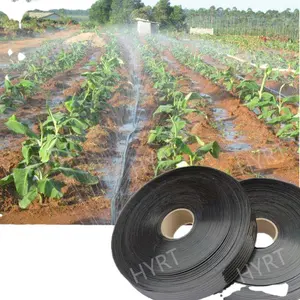
All categories
Featured selections
Trade Assurance
Buyer Central
Help Center
Get the app
Become a supplier

(994 products available)














































sprinkler extended coverage have become an essential tool in maintaining vibrant and healthy gardens. These devices, designed to distribute water evenly across lawns and flower beds, ensure that plants receive the right amount of hydration needed for optimal growth. They come in various designs and functionalities, allowing users to choose the most suitable option for their specific gardening needs. With the increasing focus on efficient water usage, sprinkler extended coverage have evolved to incorporate advanced technologies that promote sustainability and convenience. From small residential gardens to expansive commercial landscapes, these tools play a crucial role in modern gardening practices.
The market offers a diverse range of sprinkler extended coverage tailored to different watering requirements. Oscillating sprinklers are popular for their ability to cover rectangular areas efficiently, making them ideal for medium to large lawns. Impact sprinklers, known for their durability and wide coverage, are perfect for larger areas or uneven terrain. For gardens with intricate layouts, rotary sprinklers provide customizable settings to ensure thorough irrigation. Drip sprinklers, on the other hand, are designed for targeted watering, delivering moisture directly to the plant roots, which is particularly beneficial for conserving water. Each type of sprinkler extended coverage is engineered to address specific gardening challenges, offering flexibility and precision in water distribution.
Modern sprinkler extended coverage are equipped with a range of features that enhance their functionality and user experience. Adjustable spray patterns allow gardeners to modify the water flow according to the landscape's needs, ensuring even coverage. Timers and sensors are integrated into many models, enabling automated watering schedules that optimize water usage and reduce wastage. Some sprinkler extended coverage come with rain sensors, which pause the watering cycle during rainfall, further conserving water resources. Additionally, the materials used in these devices, such as rust-resistant metals and durable plastics, ensure longevity and reliability. These features collectively make sprinkler extended coverage an indispensable component of efficient garden management.
The construction of sprinkler extended coverage involves the use of materials that not only withstand various environmental conditions but also ensure efficient operation. High-quality plastics are commonly used for their lightweight and corrosion-resistant properties, making them ideal for outdoor use. Metals like stainless steel and brass are often employed in key components, such as nozzles and connectors, to enhance durability and performance. Some sprinkler extended coverage incorporate rubber seals and gaskets to prevent leaks and maintain consistent pressure. The choice of materials directly impacts the sprinkler's efficiency, lifespan, and maintenance requirements, allowing users to select options that best suit their environmental conditions and usage frequency.
To maximize the benefits of sprinkler extended coverage , it is crucial to understand the specific watering needs of your garden. Begin by assessing the size and layout of your garden to determine the most suitable sprinkler type. Position sprinkler extended coverage strategically to ensure even coverage without overwatering or leaving dry patches. Adjust the settings to match the water requirements of different plants, taking into account factors such as soil type and climate conditions. Regularly inspect and clean sprinkler extended coverage to prevent clogs and ensure optimal performance. By incorporating these practices, gardeners can achieve lush, healthy landscapes while promoting water conservation and efficiency.
When selecting sprinkler extended coverage for your garden, several factors should be considered to ensure optimal performance and efficiency. First, evaluate the size and shape of your garden. Larger areas may benefit from impact sprinklers that offer wide coverage, while smaller gardens with intricate designs might require rotary sprinklers for precision watering. Additionally, consider the water pressure available in your area, as some sprinkler extended coverage require higher pressure to operate effectively. Understanding these aspects will help you choose the most suitable sprinkler system for your landscape.
Another crucial factor is the type of plants in your garden. Different plants have varying water needs, which can influence the choice of sprinkler extended coverage . For instance, flower beds may benefit from drip sprinklers that provide targeted watering, reducing the risk of overwatering. Conversely, lawns may require oscillating sprinklers that evenly distribute water across a larger surface area. Assessing the specific hydration requirements of your plants will guide you in selecting sprinklers that best meet your garden's needs.
The ideal water pressure for operating sprinkler extended coverage typically ranges from 30 to 50 psi (pounds per square inch). However, some sprinklers, especially impact models, may require higher pressure to achieve optimal performance. It's essential to check the specifications of the sprinkler model you choose to ensure compatibility with your water supply.
Yes, sprinkler extended coverage can be used in regions with water restrictions, provided they are equipped with efficient features such as timers and rain sensors. These components help minimize water usage by allowing scheduled watering and pausing during rainfall. Drip sprinklers are particularly suitable for water conservation, as they deliver water directly to plant roots, reducing evaporation and runoff.
Regular maintenance of sprinkler extended coverage is crucial to ensure they function efficiently. It is recommended to inspect and clean sprinklers at least once a month to remove debris and check for any clogs or leaks. Additionally, seasonal maintenance, such as winterizing sprinklers, can prevent damage from freezing temperatures, extending their lifespan.
Eco-friendly sprinkler extended coverage are available and designed to promote sustainable water usage. Features such as adjustable spray patterns, timers, and rain sensors enhance efficiency, reducing water wastage. Drip irrigation systems are particularly eco-friendly, as they target specific areas and minimize water consumption.
Many sprinkler extended coverage offer customization options to suit specific watering needs. Adjustable nozzles and spray patterns allow users to modify water distribution according to landscape requirements. Additionally, programmable timers enable tailored watering schedules, ensuring plants receive the right amount of moisture at optimal times.